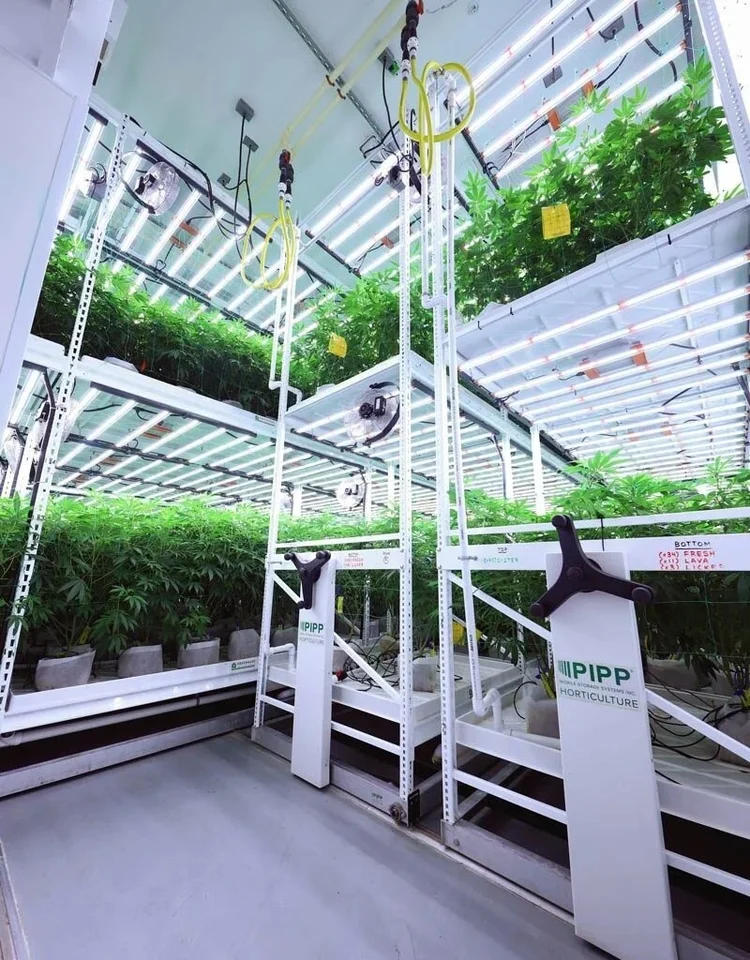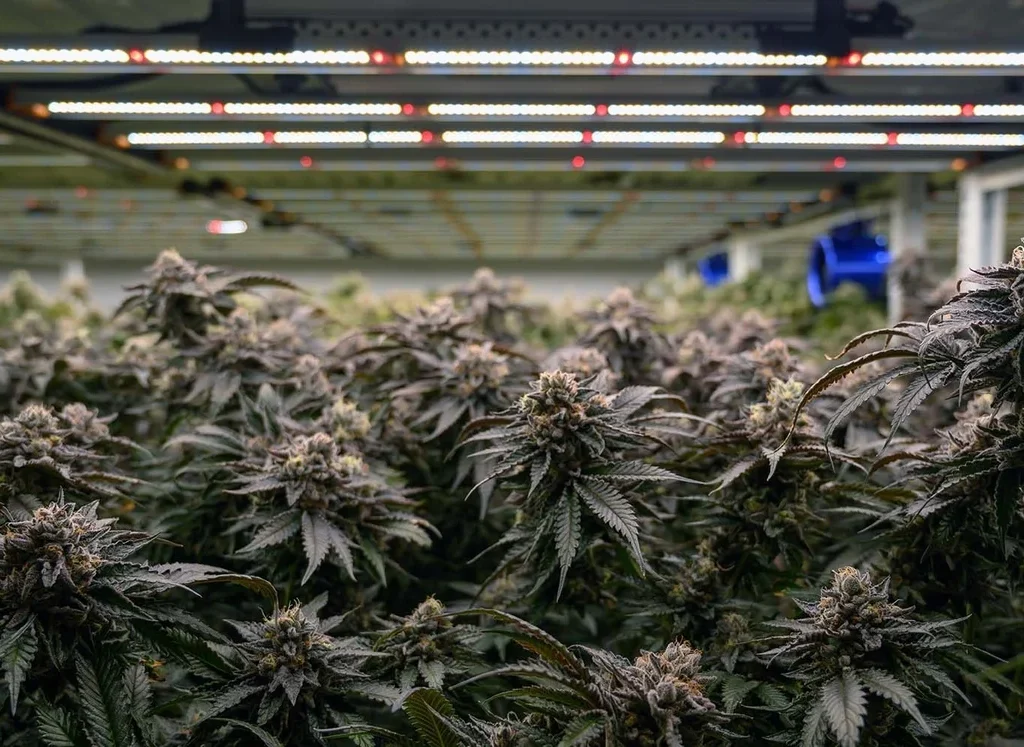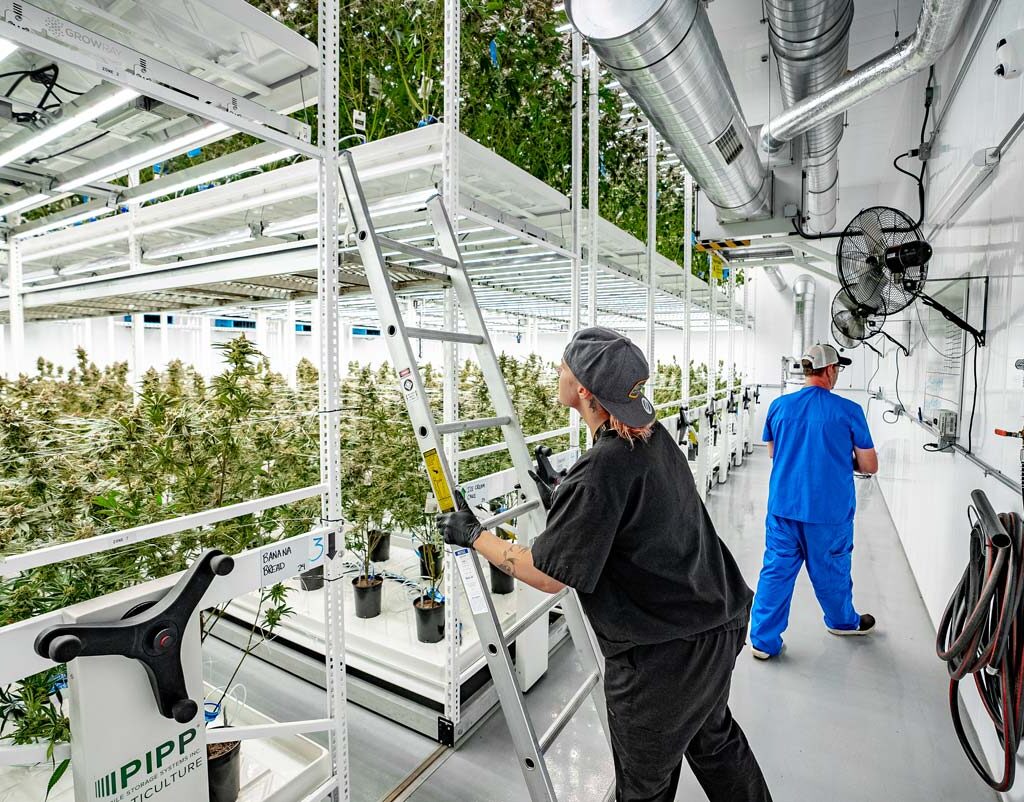Maximize Growth by Retrofitting Your Cannabis Facility
Retrofitting an existing building into a cannabis cultivation facility can be one of the smartest financial decisions for growers. Instead of starting from scratch, you can transform an underutilized warehouse or commercial building into a productive grow operation. But make no mistake, designing a cannabis grow room in a retrofit requires careful planning.
From ceiling heights to HVAC loads, every detail can affect plant health, compliance, and profitability. Below, we’ll cover the most important considerations when designing a retrofit grow, and how new technologies are helping cultivators maximize every square foot.
What Makes Retrofitting a Cannabis Facility Challenging?
Unlike new builds, retrofits often come with limitations that weren’t designed for controlled environment agriculture (CEA). Some of the most common challenges include:
- Low or uneven ceiling heights that restrict tiered cultivation.
- Awkward floor layouts that disrupt workflow.
- Outdated HVAC systems not built to manage heat and humidity loads.
- Drainage and irrigation constraints in spaces never intended for cultivation.
- Compliance codes that add complexity to older buildings.
With the right design choices, these challenges can be overcome, and even turned into opportunities to create a highly efficient grow.

1. Maximize Space with Vertical Growing Systems
In a retrofit, floor space is usually the biggest limitation. Instead of expanding outward, consider growing upward with mobile vertical racking systems. Multi-tier setups allow cultivators to double or triple their canopy without additional square footage.
Pipp’s Mobile Vertical Grow Racks are engineered specifically for cannabis, giving growers a scalable, ergonomic, and space-maximizing solution. By using mobile aisles, you gain full access to every plant while reducing wasted space.
2. Optimize HVAC and Airflow with VAS 2.0
Temperature and humidity are the lifeblood of cannabis cultivation, and retrofits often struggle with proper airflow. This is where advanced airflow systems come in.
Pipp’s VAS 2.0 Vertical Airflow System was designed to eliminate microclimates in multi-tier grow rooms by pushing conditioned air horizontally across each canopy layer. Benefits include:
- Even airflow distribution across all tiers.
- Improved plant health and consistency, reducing hot spots and humidity pockets.
- Compatibility with vertical racks, ensuring airflow integrates with your cultivation system.
For retrofits with low ceilings or unconventional layouts, VAS 2.0 can be the difference between battling climate issues and achieving stable, predictable environments.
3. Upgrade to LED Lighting for Multi-Tier Environments
Lighting retrofits are about more than swapping fixtures. Many older facilities aren’t wired for today’s power demands, and traditional HID lights produce excess heat that strains HVAC systems.
Modern LED grow lights solve these challenges by:
- Lowering energy costs and heat load.
- Providing uniform canopy penetration across vertical tiers.
- Offering dimming and automation capabilities to fine-tune growing conditions.
When planning a retrofit, map lighting layouts to prevent shaded areas and ensure each tier receives even light intensity.
4. Rethink Irrigation and Drainage
Water management is one of the most critical (and often underestimated) aspects of retrofitting. Older buildings weren’t designed to handle the water volume of a cannabis facility, and poor drainage can quickly lead to standing water, mold growth, and compliance issues.
A successful retrofit should include:
- Centralized fertigation systems that deliver precise and consistent nutrition.
- Level floors for proper drainage and rack stability. Mobile racking systems require level flooring to operate safely, while sloped grow trays handle drainage by directing water toward floor drains.
- Accessible plumbing that allows for future expansion or reconfiguration.
Another key element is selecting the right trays for water capture and drainage at the plant level. Pipp’s Grow Trays are designed for multi-tier environments and integrate seamlessly with vertical racks. These trays feature built-in slope technology to ensure uniform drainage and prevent stagnant water, helping maintain root health and reducing the risk of disease.
By pairing reliable irrigation systems with high-performance grow trays, cultivators can protect their crops, maintain compliance, and simplify daily operations.
5. Build for Compliance and Safety
Cannabis facilities must meet more than cultivation standards—they need to comply with commercial building codes, too. Retrofitted spaces should be designed with:
- Fire suppression systems tailored to grow room layouts.
- Worker safety protocols, especially in multi-tier racking environments.
- ADA accessibility throughout the facility, including floor track design.
Pipp’s mobile racking tracks are engineered to be ADA compliant, ensuring smooth transitions and accessibility across aisles while maintaining safety and operational efficiency.
Addressing compliance during the design stage prevents costly delays and inspection issues down the line.

Why Vertical Solutions Are Key in Retrofitting
When working with an existing footprint, vertical cultivation is the clearest path to increasing ROI. Benefits include:
- Higher yields per square foot.
- More efficient workflows.
- Flexibility to scale as demand grows.
See examples of how vertical systems transform retrofits in our Grow Room Gallery.
Frequently Asked Questions About Retrofitting Cannabis Facilities
Q: Is it cheaper to retrofit an existing building or build new?
A: In most cases, retrofitting is more cost-effective than new construction because you’re working with an existing structure. However, costs can vary depending on building condition, compliance upgrades, and how much infrastructure (HVAC, plumbing, electrical) needs updating.
⸻
Q: How do I know if my building is a good candidate for a cannabis retrofit?
A: Start by looking at ceiling height, available utilities (power, water, HVAC), and overall layout. Column spacing is also a major factor—older buildings often have tighter column grids, which can limit how efficiently mobile racking systems can be laid out and reduce usable canopy space. Modern structures with wider column spacing typically allow for better rack alignment, smoother workflow, and easier equipment access. Warehouses and industrial spaces often retrofit well, while facilities with very low ceilings or limited power may require additional investment.
⸻
Q: What’s the biggest mistake growers make when retrofitting?
A: Underestimating environmental controls. HVAC, airflow, and drainage are often overlooked in favor of lighting or racks—but without proper climate and water management, even the best equipment can underperform.
⸻
Q: Can vertical grow racks really make a difference in retrofits?
A: Absolutely. Vertical systems maximize limited square footage, allowing cultivators to double or triple their canopy while maintaining efficient workflows. Pairing vertical racks with systems like the VAS 2.0 and Grow Trays ensures stability and scalability.
⸻
Q: How long does a retrofit usually take?
A: Timelines vary, but most retrofits move faster than ground-up builds since you’re not waiting on full-scale construction. Planning, permitting, and any necessary infrastructure upgrades are typically the biggest variables.
Final Thoughts
Retrofitting a cannabis facility isn’t just about fitting plants into an existing building; it’s about designing an environment that maximizes plant health, workflow, and long-term profitability. By focusing on vertical racking, airflow solutions like VAS 2.0, LED lighting, water management, and compliance, cultivators can build future-proof facilities that deliver consistent results.
At Pipp Horticulture, we’ve helped growers nationwide retrofit facilities of every size and shape into efficient, high-performing cultivation spaces.
💡 Ready to explore retrofitting options? Contact our team to start planning your grow room design.

Get a FREE Grow Consultation
Lorem ipsum dolor sit amet, consectetur adipiscing elit. Ut elit tellus, luctus nec ullamcorper mattis, pulvinar dapibus leo.
